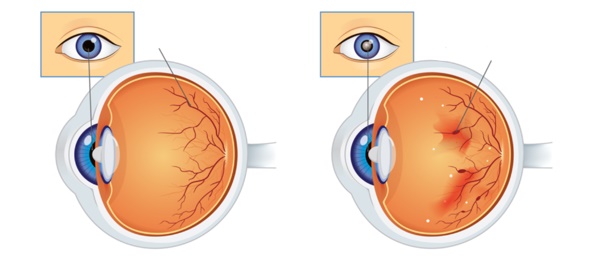About Diabetic Eye Screening
What is diabetic eye screening?
Diabetes is the leading cause of preventable sight loss in the UK.1
1Diabetes UK Diabetic Retinopathy. Available at: Diabetic retinopathy | Diabetes and eye problems | Diabetes UK [Accessed: November 2022]
If you have diabetes, high blood sugar (glucose) or big changes in blood sugar levels can damage the back of the eye (retina). This is known as diabetic retinopathy. These early changes to your retina can often go unnoticed. Diabetic eye screening can find changes in your eyes before it affects your eyesight.
Diabetic eye screening involves having photos taken of your eyes to check for changes.
Everyone aged 12 or over, diagnosed with type 1 or type 2 diabetes and registered with a doctor in Wales will be invited for a free diabetic eye screening test.
If you have been diagnosed with type 1 or type 2 diabetes your doctor will let us (Diabetic Eye Screening Wales) know. We will send you an invitation letter with a date and time for an appointment, each time you are due for diabetic eye screening.
If your last two diabetic eye screenings found no sign of diabetic eye disease you will be screened every two years. This is because you are at low risk of diabetic eye disease. If diabetic eye disease was found you will be screened more often.
If you notice any changes in your eyesight contact your optician. Do not wait for your next screening appointment.
Find out about signs and symptoms.
About diabetic retinopathy
Sight loss from diabetic retinopathy has been reduced since screening started.2
2 Scanlon PH. The contribution of the English NHS Diabetic Eye Screening Programme to reductions in diabetes-related blindness, comparisons within Europe, and future challenges - PMC (nih.gov) Acta Diabetol. 2021 Apr;58(4):521-530. [Accessed: Novemeber 2022]
Diabetic retinopathy is a condition that can affect anyone who has type 1 or type 2 diabetes. It causes damage to the blood vessels supplying the back of the eye (the retina).
Over time, high blood sugar or big changes in blood sugar levels can make the blood vessels leak or become blocked. If left untreated, it can damage your eyesight. Diabetic retinopathy can take many years to develop and often has no obvious symptoms.

The first (left) image shows an eye with no retinopathy at the back of the eye (the retina). The second (right) image shows an eye that had diabetic retinopathy changes, with leaky blood vessels.
Finding early changes means you can have treatment to prevent sight loss. Going for diabetic eye screening when invited is important as it can pick up changes at early stage, before you notice any changes to your eyesight. Any changes can then be monitored and referred for treatment at a hospital if required.
It is important to keep healthy, by managing and treating your diabetes Visit Diabetes management | taking care of your diabetes | Diabetes UK or talk to your health professional for more information.
Why is diabetic eye screening important?
Going for your diabetic eye screening is one of the things you can do to look after your eyesight.
Diabetic eye screening is important because:
• Screening can find changes in your eyes before they start to affect your vision.
• Diabetic retinopathy does not usually cause any symptoms in the early stages.
• Monitoring and treatment can slow or reverse changes caused by diabetic retinopathy.
• Diabetic retinopathy can cause blindness if not diagnosed and treated.
Discover more